The list of top selling cars in Japan are

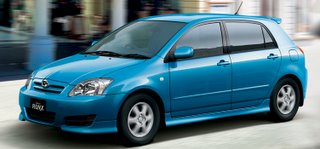
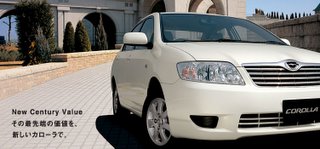 1. Toyota Corolla (1 in '04)
1. Toyota Corolla (1 in '04)Same name, but a lot more variations on the theme for the Japanese market. And some of the names are a bit unfortunate in English. Runx (in blue, above)?
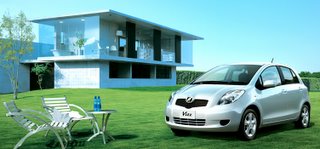 2. Toyota Vitz (16 in '04)
2. Toyota Vitz (16 in '04)Another great name, Vitz? Maybe they'll go yiddish with the name and rebrand it the Shvitz in the U.S.. A big jump in sales from '04, the small size and great gas mileage probably helps.
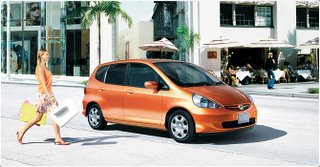
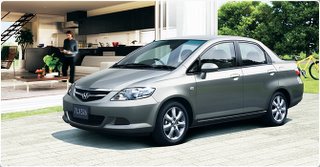 3. Honda Fit (2 in '04)
3. Honda Fit (2 in '04)This car slipped a spot in '05. Maybe cause they seem to only sell it to white people.
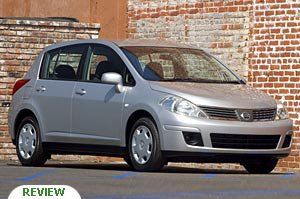 4. Nissan Tiida (new)
4. Nissan Tiida (new)This car has already been reviewed by WaPo. According to the review it will be called the Versa stateside. It will be available in a few months.
 5. Nissan Note (new)
5. Nissan Note (new)They do like their tall wagons over there.
 6. Toyota Wish (4 in '04)
6. Toyota Wish (4 in '04)I Wish it would go a little faster (sorry, couldn't resist). I think this is the Scion xA [correction: this car shares engines with the Camry, so it's more of a Camry wagon rather than a Scion xA, the ist is the Japanese Scion xA] over here, but not sure.
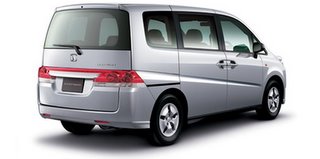 7. Honda Stepwgn (20 in '04)
7. Honda Stepwgn (20 in '04)This car had a big jump in sales in '05. This is a six passenger, really tall wagon. I can promise you that no matter how high gas prices go in the U.S. that this won't darken our shores. I can't imagine any current American SUV or Minivan driver ever seeing this as a viable substitute, and Honda is smart enough to understand that.
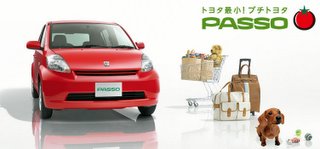
 8. Toyota Passo (12 in '04)
8. Toyota Passo (12 in '04)Ooohh, it's as cute as a tomato. Clearly being marketed as a 'lady's' car. Please note - Weiner dog is a dealer add on, not a factory accessory. I included the Welcab picture, too. I find it interesting that they have tiny handi-accessible vehicles in Japan, I'd love to see some of those over here, they are needed. Just cause you have limited mobility (or have a family member that does) doesn't mean you should have to drive a Chevy Passenger van.

9. Toyota Alphard (9 in '04)
That's a seriously unfortunate name. Another 6 passenger, really tall wagon, but sexier.
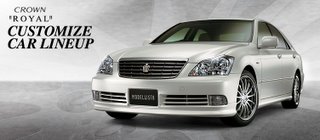
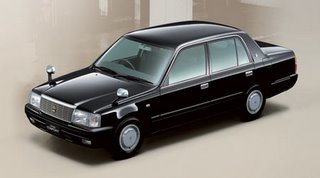
10. Toyota Crown (5 in '04)
Speaking of unfortunate names. The Crown Royal? Might as well call it the Toyota DUI. The Crown name ranges from Lexus style (no separate brands for Scion or Lexus, everything is a Toyota over there) luxo-mobiles like the Royal, to the Taxi like utility and old school styling of the Comfort. A bit of a drop in domestic sales for this (though the Camry, which some of the Crowns resemble [correction: most of the Crown's are upscale and are more likely akin to the Lexus GS], is still doing fine in the U.S.). Many of the models have V6s, V8s and $40000 dollar price tags, guess the economy is doing better, but not that much better.
So why did I bother making this list? Because having a blog means never having to ask why, but why not. I saw the article, was curious about the cars listed, and since I was going to look them up anyway, why not do a link rich, photo aided, fat old post that maybe dozens of other people would find interesting.
2 comments:
Out of curiosity - do the Japanese make cars bigger for American consumers than for domestic customers? It seemed that way from what I've seen while travelling there.
Yes.
I believe pretty much most cars sold in the Japanese domestic market are limited to 1.76M (or 69") in width (which is why those 6 passenger tall wagons look so strange and aren't sold in the U.S.), and they often stretch the sheet metal on top of the frame for the U.S. version to increase the interior width while keeping the same rolling frame to reduce costs.
I believe Honda began this technique in the late 80s and early 90s and everyone else has followed, but the Japanese makers have done so much more successfully (The U.S. automakers hamper themselves in the Asian and European markets by building wider frames that can't be shrunk to the desired sizes)
I could be completely wrong on all this, but I'm pretty sure this is close to the truth.
(I guess I'll annoy RIA and say there is 'truthiness' in my above statements if not truthfulness)
I checked the specs on the current Accord, Japan width 69", length 183", wheelbase 105". U.S. width 72", length 191", wheelbase 108".
Post a Comment